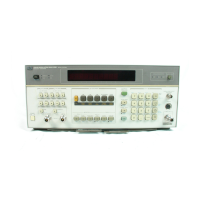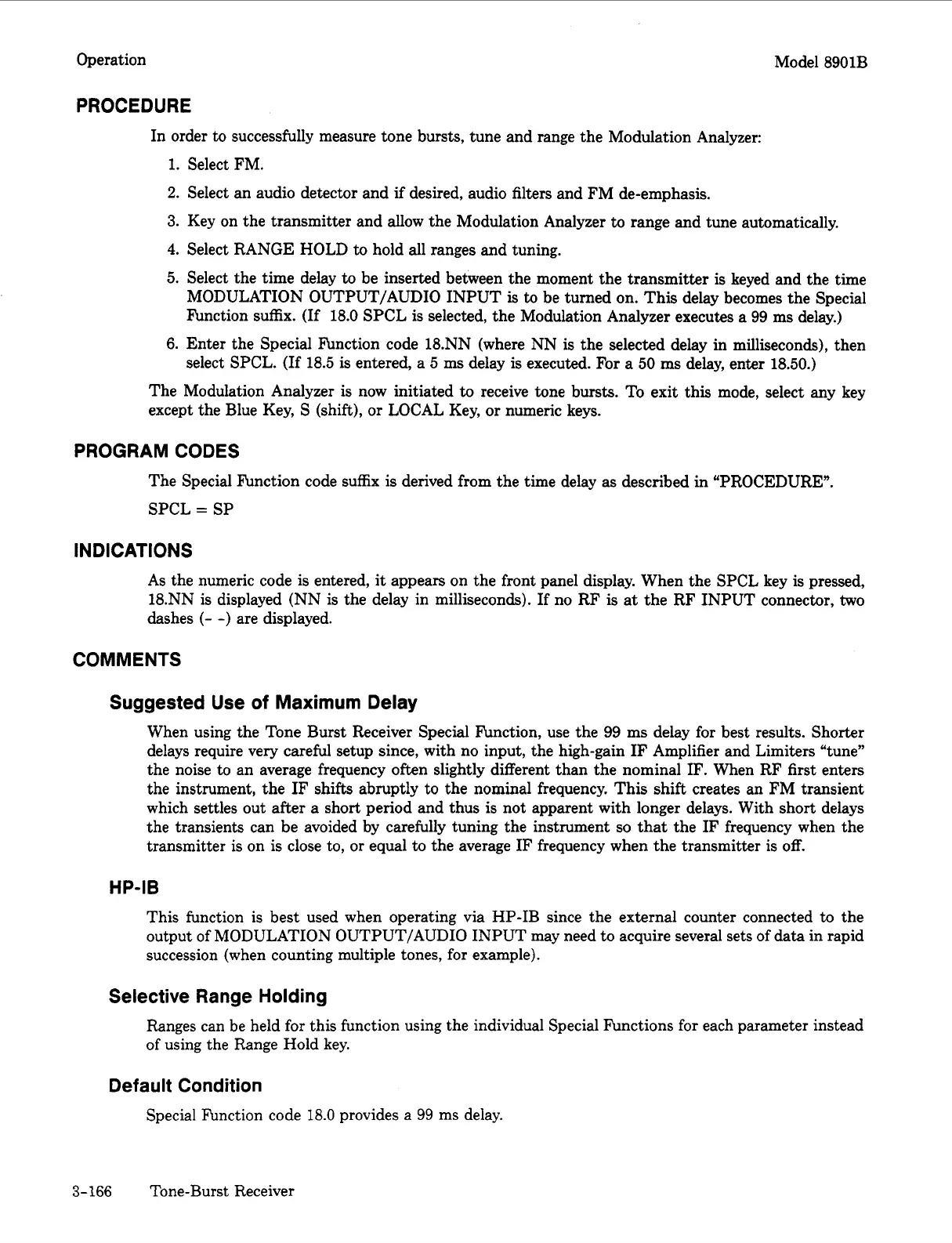Operation Model 8901B
1.
2.
3.
4.
5.
6.
PROCEDURE
In order
to
successfully measure tone bursts, tune and range the Modulation Analyzer:
Select FM.
Select an audio detector and
if
desired, audio filters and FM de-emphasis.
Key on the transmitter and allow the Modulation Analyzer
to
range and tune automatically.
Select RANGE HOLD to hold all ranges and tuning.
Select the time delay
to
be inserted between the moment the transmitter is keyed and the time
MODULATION OUTPUT/AUDIO INPUT is
to
be turned on. This delay becomes the Special
Function suffix. (If 18.0 SPCL is selected, the Modulation Analyzer executes a 99 ms delay.)
Enter the Special Function code
18.”
(where NN
is
the selected delay
in
milliseconds), then
select SPCL.
(If
18.5 is entered, a
5
ms delay is executed. For
a
50 ms delay, enter 18.50.)
The Modulation Analyzer is now initiated to receive tone bursts. To exit this mode, select any key
except the Blue Key,
S
(shift),
or
LOCAL Key,
or
numeric keys.
PROGRAM CODES
The Special Function code suffix
is
derived from the time delay as described in “PROCEDURE”.
SPCL
=
SP
IN
D
I
CAT1 ON
S
As
the numeric code
is
entered, it appears on the front panel display. When the SPCL key is pressed,
18.”
is displayed (NN is the delay in milliseconds). If no RF
is
at the RF INPUT connector,
two
dashes
(-
-)
are displayed.
COMMENTS
Suggested Use
of
Maximum Delay
When using the Tone Burst Receiver Special Function, use the 99 ms delay for best results. Shorter
delays require very careful setup since, with no input, the high-gain
IF
Amplifier and Limiters “tune”
the noise to an average frequency often slightly different than the nominal IF. When RF first enters
the instrument, the
IF
shifts abruptly to the nominal frequency. This shift creates an FM transient
which settles out after a short period and thus is not apparent with longer delays. With short delays
the transients can be avoided by carefully tuning the instrument
so
that the IF frequency when the
transmitter is on is close to,
or
equal to the average IF frequency when the transmitter is
off.
HP-IB
This function
is
best used when operating via HP-IB since the external counter connected to the
output
of
MODULATION OUTPUT/AUDIO INPUT may need to acquire several sets of data in rapid
succession (when counting multiple tones, for example).
Selective Range Holding
Ranges can be held for this function using the individual Special Functions for each parameter instead
of
using the Range Hold key.
Default Condition
Special Function code
18.0
provides a
99
ms delay.
3-166
Tone-Burst Receiver

